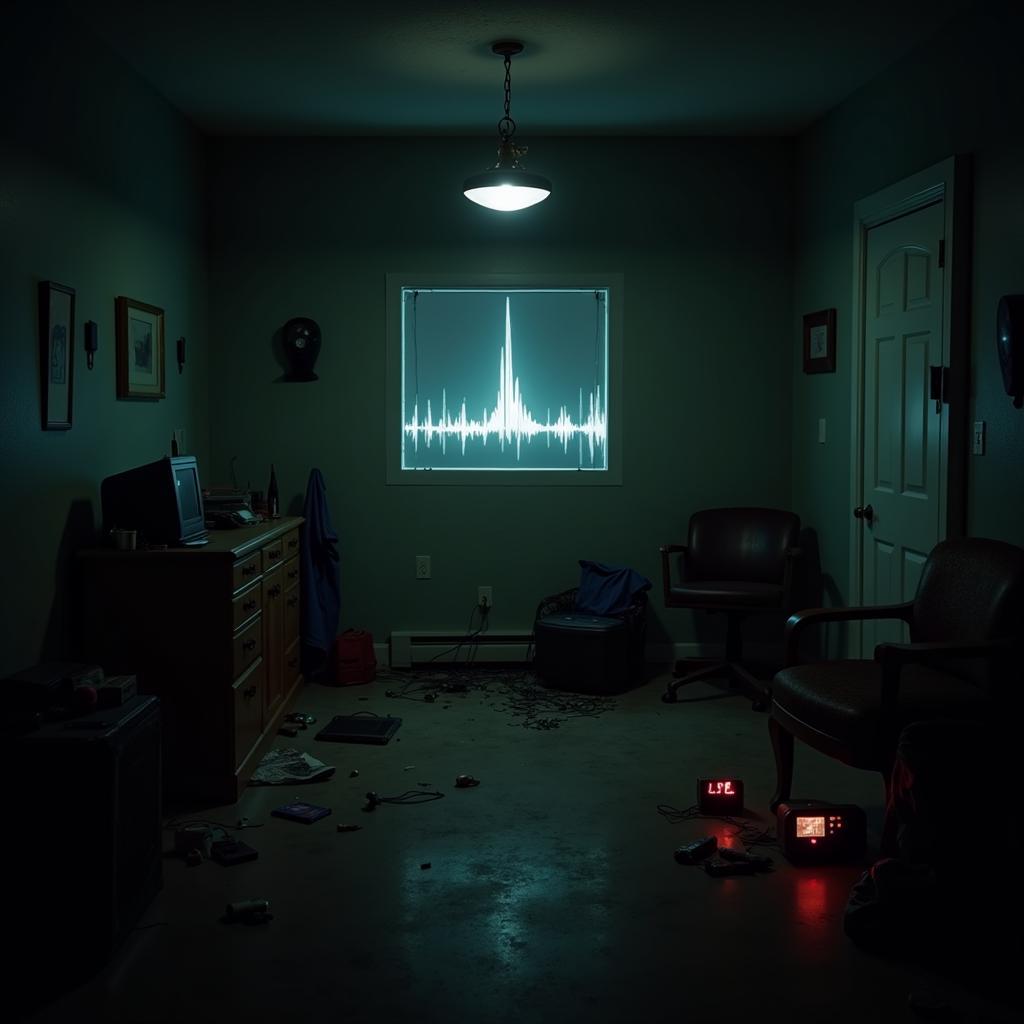The term “Research Dilemma Dmz” might seem a bit cryptic at first glance, but it speaks to a very real challenge faced by investigators of the paranormal. The “DMZ” in this context refers to the “demilitarized zone” between the known and the unknown, the boundary where science and the supernatural intersect. This article delves into the complexities of this research dilemma, exploring the challenges and possibilities that emerge when we attempt to apply scientific rigor to the study of paranormal phenomena.
The pursuit of knowledge has always been driven by curiosity and a thirst for understanding. However, when venturing into the realm of the paranormal, researchers encounter a unique set of obstacles. Traditional scientific methodologies, often reliant on empirical evidence and repeatability, can fall short when confronted with phenomena that defy easy categorization or replication. This is the crux of the research dilemma in the DMZ – how do we reconcile the seemingly incompatible worlds of scientific inquiry and paranormal investigation?
The Elusive Nature of Paranormal Phenomena
One of the primary challenges lies in the very nature of what we seek to understand. Paranormal phenomena, by definition, deviate from established scientific norms. Ghosts, ESP, and other such occurrences often manifest sporadically, under specific conditions that are difficult to predict or recreate in a controlled environment. This elusiveness makes data collection and analysis a formidable task.
 Paranormal Investigation in the DMZ
Paranormal Investigation in the DMZ
Imagine, for instance, attempting to study a purportedly haunted location. The phenomena might range from subtle cold spots and unexplained noises to full-bodied apparitions, each occurring independently and without warning. Documenting these events in a way that satisfies scientific scrutiny requires meticulous observation, a variety of investigative tools, and a healthy dose of patience.
Bridging the Gap: Methodologies and Approaches
Despite these inherent difficulties, researchers are not without tools and strategies. Over the years, a multidisciplinary approach has emerged, borrowing from fields such as psychology, physics, and anthropology to shed light on the mysteries of the paranormal. Here are some key methodologies employed:
- Electromagnetic Field (EMF) Readings: Paranormal investigators often utilize EMF meters to detect fluctuations in electromagnetic fields, which are believed to be associated with spirit presence or other anomalous energy.
- EVP Recording and Analysis: Electronic voice phenomena (EVP) recording involves using audio equipment to capture faint sounds or voices that are not audible to the human ear. These recordings are then analyzed for potential messages or evidence of spirit communication.
- Thermal Imaging: Thermal cameras can detect variations in temperature, which might indicate cold spots often attributed to paranormal activity.
- Psychical Research Techniques: Some researchers delve into the realm of psychical research, exploring phenomena like telepathy, clairvoyance, and precognition through controlled experiments and observations.
 Paranormal Research: Tools and Techniques
Paranormal Research: Tools and Techniques
While these methods provide valuable data points, it is crucial to approach them with a critical and discerning eye. The interpretation of findings requires careful consideration of potential environmental factors, equipment limitations, and the possibility of human error or bias.
The Importance of Objectivity and Collaboration
Perhaps the most critical element in navigating the research dilemma in the DMZ is maintaining objectivity. It’s easy to get swept up in the excitement of a potential paranormal encounter, but researchers must remain grounded in their pursuit of evidence-based conclusions.
This is where collaboration becomes essential. By fostering open dialogue and sharing findings within the scientific community, researchers can subject their work to peer review, identify potential flaws in methodology, and ultimately strengthen the validity of their conclusions.
Conclusion: The Ongoing Quest for Understanding
The research dilemma in the DMZ is not easily resolved. It’s a constant balancing act between acknowledging the limitations of current scientific paradigms and embracing the possibility that our understanding of the universe is far from complete. Yet, it is this very challenge that makes the pursuit so compelling. By approaching the unknown with both curiosity and skepticism, we can continue to push the boundaries of knowledge and explore the fascinating mysteries that lie at the fringes of our perception.
Frequently Asked Questions
1. What is the DMZ in paranormal research?
The DMZ, or demilitarized zone, refers to the metaphorical boundary between the known and unknown, where scientific principles intersect with paranormal phenomena.
2. Why is researching paranormal phenomena so challenging?
Paranormal occurrences are often unpredictable, difficult to replicate, and defy easy categorization using traditional scientific methods.
3. What are some tools used in paranormal investigations?
Common tools include EMF meters, digital voice recorders for EVP analysis, thermal cameras, and various psychical research techniques.
4. How can we ensure objectivity in paranormal research?
Maintaining a critical mindset, considering all possible explanations, and engaging in open collaboration with other researchers are crucial for ensuring objectivity.
5. What is the significance of the research dilemma in the DMZ?
This dilemma highlights the ongoing need to bridge the gap between scientific inquiry and paranormal investigation, fostering a more comprehensive understanding of the universe.
Need Help with Your Own Paranormal Research?
Contact us for assistance:
Phone: 0904826292
Email: research@gmail.com
Address: No. 31, Alley 142/7, P. Phú Viên, Bồ Đề, Long Biên, Hà Nội, Việt Nam
Our dedicated team is available 24/7 to answer your questions and provide guidance on your Paranormal Research endeavors.